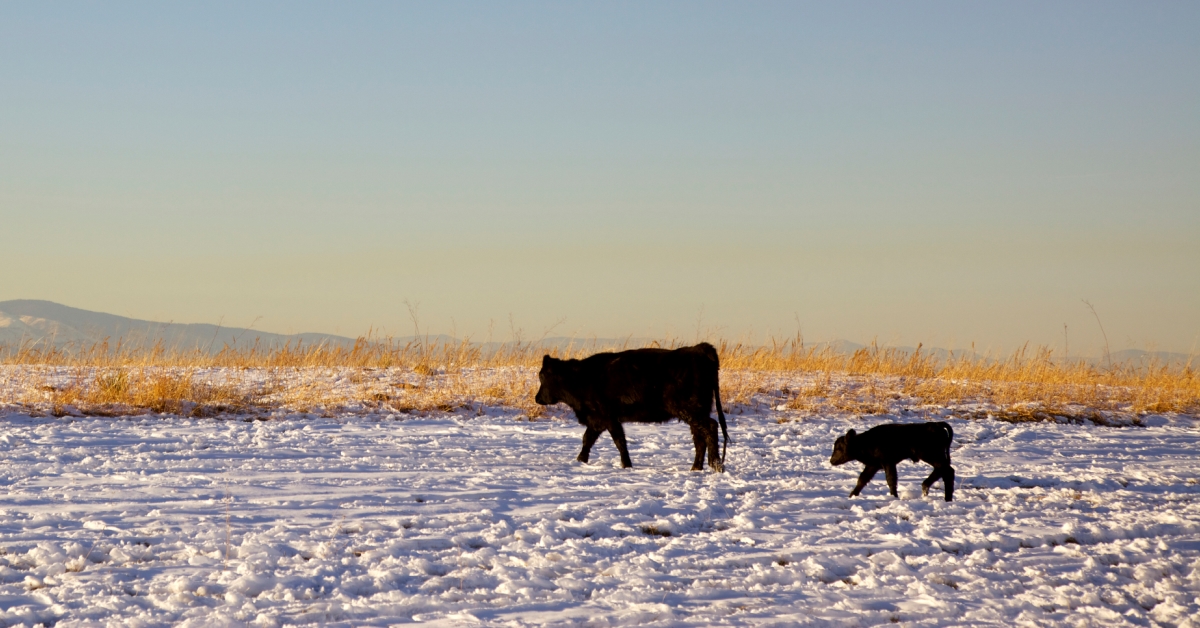
Winter is the time of year when cattle most often need additional supplementation to maintain body condition. Cows that maintain a body condition score of 5 or 6 throughout the winter are more prepared for calving and rebreeding than thinner cattle. Winter feeding contributes to a significant portion of the feeding costs associated with raising cattle. Feeding appropriate supplements will complement other feeds, optimizing inputs and managing costs.
Forage testing is the first step in evaluating forage resources and meeting nutritional needs. The development of a winter feeding program to fit the individual operation relies on the nutrient composition of the forages available. Forage testing also helps producers make the best use of forages, taking the guesswork out of supplementing cattle.
To most effectively use limited resources, it’s important to match forages to the type of cattle being fed. For example, use lower-quality forage for dry cows in mid-gestation that have relatively lower protein and energy requirements. Reserve better-quality hay for late gestation and calving/lactation. If feasible, separate young and/or thin cows from those in better condition. Separating cattle will allow cows that need to add body condition to receive better nutrition without unnecessarily feeding the entire herd good-quality forages. In addition, when supplemented properly, mature native ranges, improved pastures, meadow re-growth, corn stalks, grain stubble and straw can all be good sources of energy for dry cattle.
In most cases, protein supplementation is necessary to stimulate intake and improve digestibility when feeding low-quality forages. Ruminal microbes play a major role in forage fiber digestion. Energy is released from fiber through this process and is made available to the cow; however, fiber-digesting microbes require nitrogen for growth. Nitrogen comes from dietary protein consumed by the cow. When protein requirements are not met, fiber digestion is limited, resulting in energy passing through the cow without being used. Energy is important for cattle in the winter months, allowing them to withstand the colder temperatures — but without adequate protein, cattle have a difficult time utilizing the energy available in forages.
The amount and type of protein and/or energy supplement is dependent on the nutrient composition of the forage and the age and body condition of the cattle. Alfalfa hay can be a good source of protein but can lack the required energy for cattle that need to add body condition. Distillers grains or a similar high-protein byproduct make great protein supplements and contain added energy; however, in some areas, byproducts are not as readily available. In addition, ranches whose water contains high concentrations of sulfur are limited in the amount of byproduct that can be fed. In these instances, alternative products should be considered.
Hubbard Feeds offers a range of supplements to fit the individual producer’s needs. These protein supplements come in various forms, including cubes, meals, pellets, pressed blocks and CRYSTALYX® barrels. Cube protein concentrations range from 12–38% and can be offered at rates of 2 to 6 pounds daily. Pressed blocks offer a different method of protein supplementation, with a targeted intake of 1–4 pounds daily, with crude protein concentrations ranging from 20–38%. There are options to add vitamins and minerals to the cubes and pressed blocks, but most products serve only as protein supplements. Be sure to read the product’s labeled feeding directions to determine if additional salt, vitamin and/or mineral supplementation is required. For producers who prefer not to feed cubes, pressed blocks or tubs, Hubbard Feeds offers a high-protein meal fortified with vitamins and minerals that is fed like a loose mineral.
In addition to protein, don’t forget vitamin and mineral supplementation. The trace mineral status of the cow will not only influence her reproductive capabilities; it will also have a lifelong effect on the calf. Hubbard Feeds offers STOCKMASTER® minerals as well as BLUEPRINT® mineral and pressed blocks. Blueprint® 6% Phos Mineral, Crystal-Phos® 4 or Mineral-lyx® low-moisture blocks offer an alternative form to meet vitamin and mineral requirements. To address deficiencies and antagonists, consider a product fortified with organic trace minerals.
Determining the nutrient composition of forages is the first step in developing a winter feeding program with limited resources. Plan strategically to use limited resources at the appropriate stage of production and in the right application based on body condition and age. Supplementing protein based on forage content and requirements — and consistently meeting vitamin and mineral requirements — will help to improve performance while controlling costs. Contact your local Hubbard Feeds dealer for help with formulating a balanced winter feeding program that will maximize production.
- Log in to post comments
